Study the given graph and answer the question that follows.
The number of weeks, in which the cost of living index was 160 or more but less than 190, is approximately what percent more than the number of weeks in which the cost of living index was 200 or more but less than 220 (correct to one decimal place)?
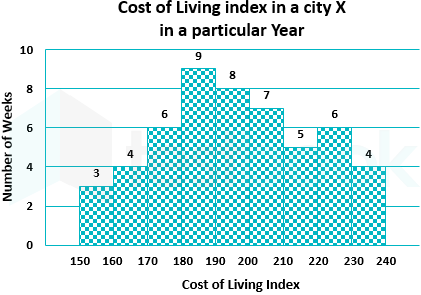
36.8
58.3
44.4
60.6
The correct Answer is:B
To solve the problem, we need to analyze the given graph to determine the number of weeks for two specific ranges of the cost of living index (C.I.) and then calculate the percentage difference.
1. Identify the Range for C.I. 160 to 190:
- We need to find the number of weeks where the cost of living index (C.I.) is 160 or more but less than 190.
- From the graph, we can see the following values:
- Weeks with C.I. 160-170: 4 weeks
- Weeks with C.I. 170-180: 6 weeks
- Weeks with C.I. 180-190: 9 weeks
- Total weeks in this range = 4 + 6 + 9 = 19 weeks.
2. Identify the Range for C.I. 200 to 220:
- Now, we need to find the number of weeks where the C.I. is 200 or more but less than 220.
- From the graph, we can see the following values:
- Weeks with C.I. 200-210: 7 weeks
- Weeks with C.I. 210-220: 5 weeks
- Total weeks in this range = 7 + 5 = 12 weeks.
3. Calculate the Percentage Increase:
- We need to find out how much more the number of weeks in the first range (160 to 190) is compared to the second range (200 to 220) as a percentage.
- The formula for percentage increase is:
Percentage Increase=(New Value−Old ValueOld Value)×100
- Here, the New Value is 19 weeks (C.I. 160-190) and the Old Value is 12 weeks (C.I. 200-220).
- Plugging in the values:
Percentage Increase=(19−1212)×100=(712)×100≈58.33%
- Rounding to one decimal place, we get 58.3%.
Final Answer:
The number of weeks in which the cost of living index was 160 or more but less than 190 is approximately 58.3% more than the number of weeks in which the cost of living index was 200 or more but less than 220.
- We need to find the number of weeks where the cost of living index (C.I.) is 160 or more but less than 190.
- From the graph, we can see the following values:
- Weeks with C.I. 160-170: 4 weeks
- Weeks with C.I. 170-180: 6 weeks
- Weeks with C.I. 180-190: 9 weeks
- Total weeks in this range = 4 + 6 + 9 = 19 weeks.
- Now, we need to find the number of weeks where the C.I. is 200 or more but less than 220.
- From the graph, we can see the following values:
- Weeks with C.I. 200-210: 7 weeks
- Weeks with C.I. 210-220: 5 weeks
- Total weeks in this range = 7 + 5 = 12 weeks.
- We need to find out how much more the number of weeks in the first range (160 to 190) is compared to the second range (200 to 220) as a percentage.
- The formula for percentage increase is:
Percentage Increase=(New Value−Old ValueOld Value)×100
- Here, the New Value is 19 weeks (C.I. 160-190) and the Old Value is 12 weeks (C.I. 200-220).
- Plugging in the values:
Percentage Increase=(19−1212)×100=(712)×100≈58.33%
- Rounding to one decimal place, we get 58.3%.
The number of weeks in which the cost of living index was 160 or more but less than 190 is approximately 58.3% more than the number of weeks in which the cost of living index was 200 or more but less than 220.
Similar Questions
Study the given graph and answer the question that follows:
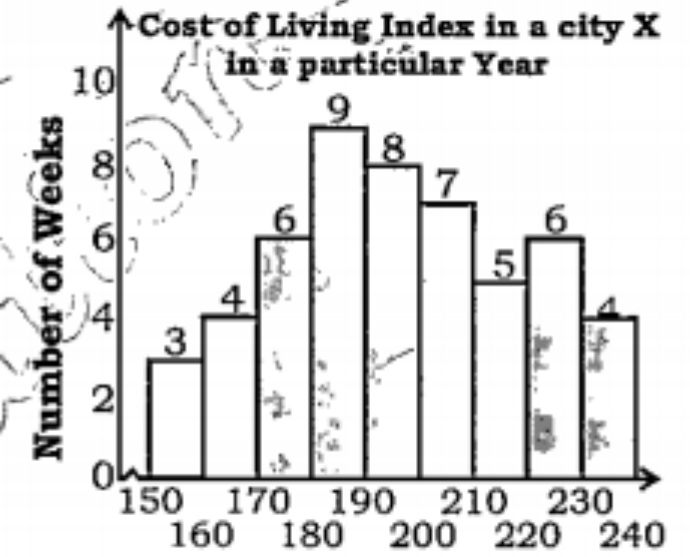
The number of weeks, iin which the cost of living index was 160 or more but less than 190, is approximately what percent more than the number of weeks in which the cost of livinig index was 200 or more but less than 220 (correct to one decimal place)?
दिए गए ग्राफ का अध्ययन करें और उस प्रश्न का उत्तर दें जो निम्न है:
सप्ताह की संख्या, iin जो लिविंग इंडेक्स की लागत 160 या उससे अधिक है, लेकिन 190 से कम है, लगभग यही है। उन सप्ताहों की तुलना में प्रतिशत अधिक है जिनमें लिविन्ग इंडेक्स की लागत 200 या उससे अधिक थी लेकिन 220 से कम (एक दशमलव स्थान के लिए सही)?
View SolutionStudy the given graph and answer the question that follows
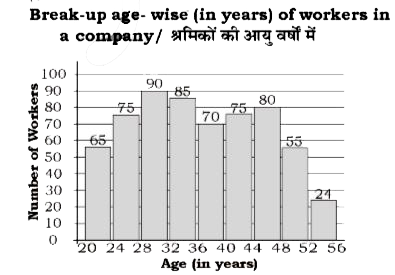
the number of workers whose age is 32 years or more but less than 44 years is:
View Solution
Knowledge Check
Study the given graph and answer the question that follows.
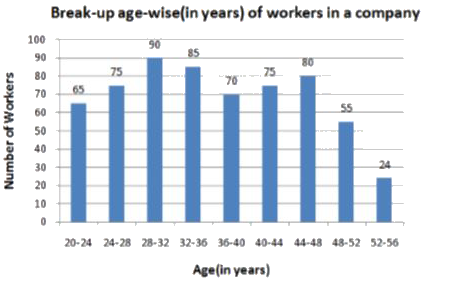
The number of workers whose age is 32 years or more but less than 44 years is:AA. 220BB. 215CC. 225DD. 230Study the given graph and answer the question that follows .
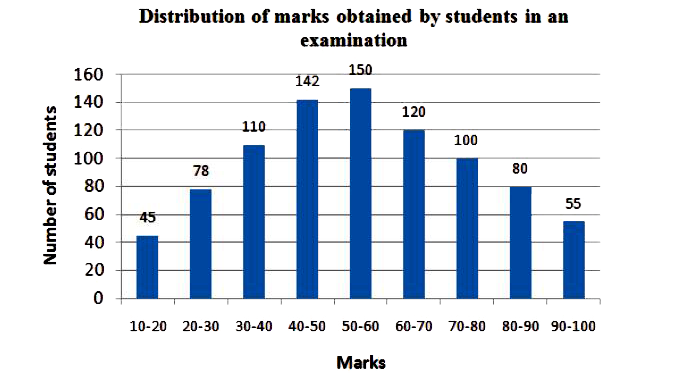
The number of students who obtained 20 marks or more but less than 60 marks is :A402B600C480D522
Study the given pie chart and answr the question that follows
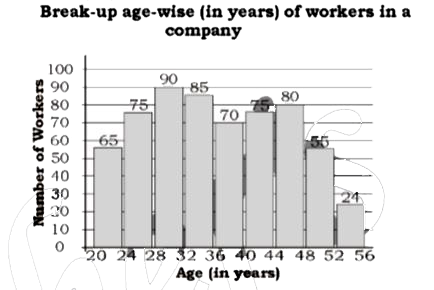
The number of workers whose age is 36 years of more but less than 48 years in what percentage more than the number of workers whose age is less than 28 years
View SolutionStudy the graph and answer the question
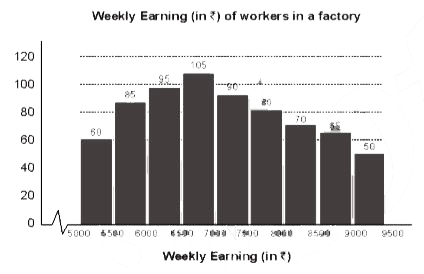
the number of workers in the factory whose weekly earnings are below Rs 5500 or more but less than Rs 7500 is
View SolutionStudy the graph and answer the question.

The number of workers in the factory whose weekly earnings are ₹5,500 or more but less than Rs.7,500 is:
View SolutionStudy the graph and answer the question
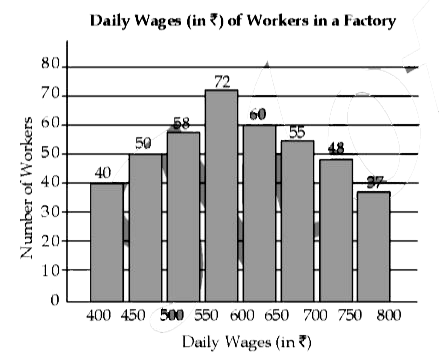
The number of workers in the factory whose daily wages are Rs 450 or more but less than Rs 600 is
View SolutionStudy the graph and answer the question
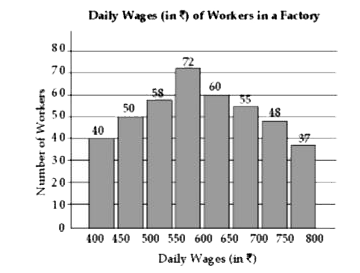
The number of workers in the factory whose daily wages are Rs 500 or more but less than Rs 650 is what percentage more than the number of workers whose daily wages are Rs 650 or more but less than Rs 750
View SolutionStudy the graph and answer the question
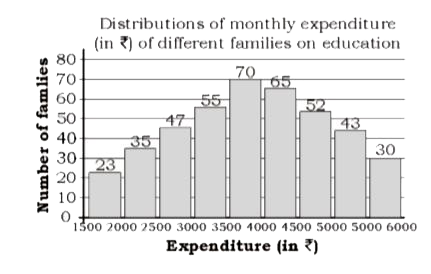
The number of families whose montly expenditures on education are Rs 2000 or more but less than Rs 4000 is
View Solution

